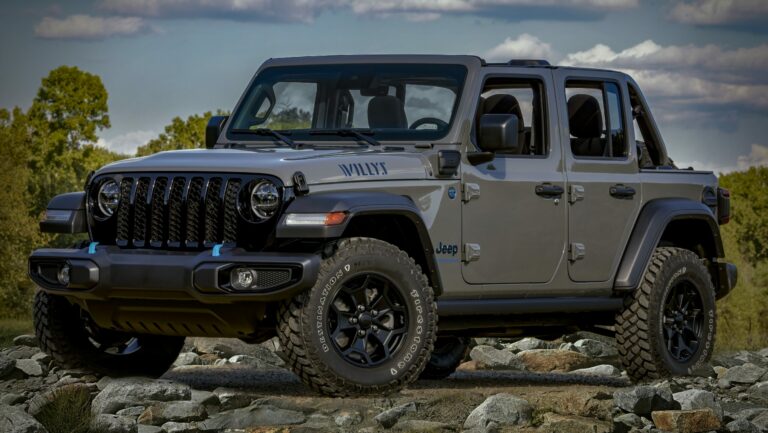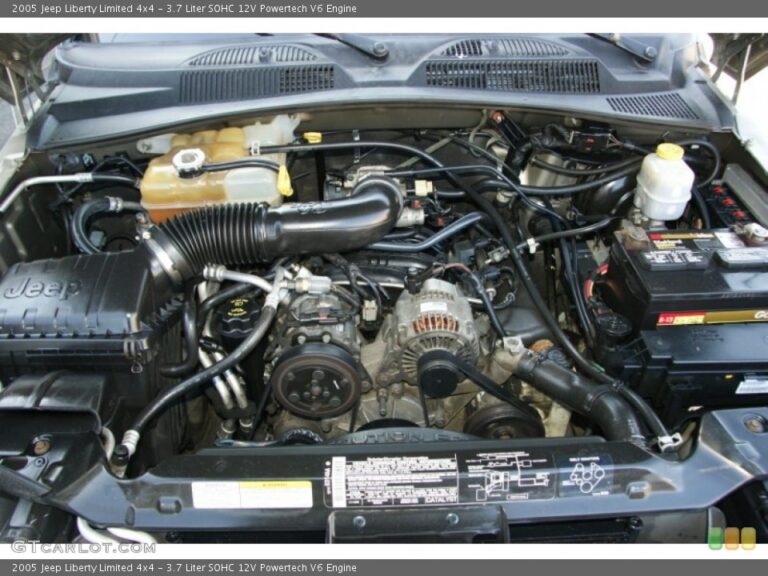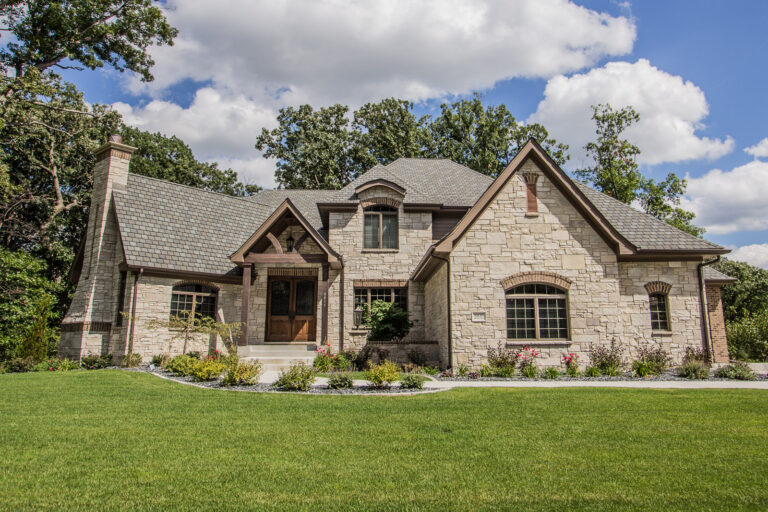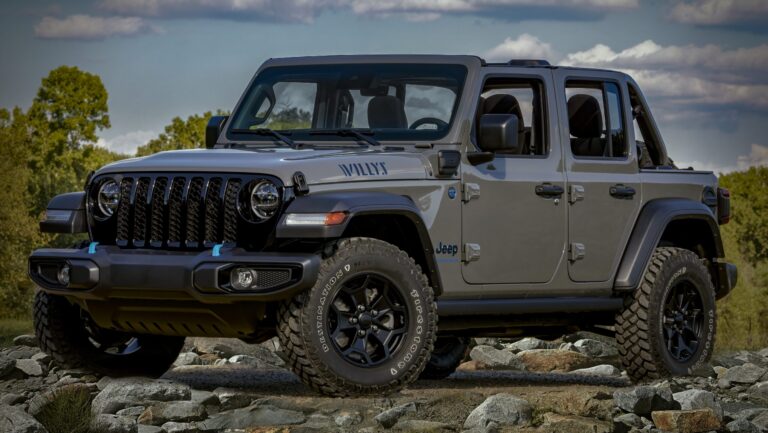Classic Willys Jeep For Sale: Your Ultimate Guide to Finding and Owning a Legend
Classic Willys Jeep For Sale: Your Ultimate Guide to Finding and Owning a Legend jeeps.truckstrend.com
The rumble of an old flathead engine, the unmistakable silhouette, and a legacy forged in the crucible of history – the Classic Willys Jeep stands as an enduring icon of American ingenuity and rugged individualism. More than just a vehicle, it’s a tangible piece of the past, a symbol of freedom, and an invitation to adventure. For many enthusiasts, the search for a "Classic Willys Jeep for Sale" isn’t just about acquiring transportation; it’s about connecting with a legend, preserving history, and embracing a unique automotive experience.
This comprehensive guide is designed for anyone contemplating joining the ranks of Willys Jeep owners. We’ll delve into the allure of these timeless machines, explore the various models, provide practical advice on where and how to find one, what to look for, and what to expect when you finally get behind the wheel of your very own piece of history.
Classic Willys Jeep For Sale: Your Ultimate Guide to Finding and Owning a Legend
The Enduring Legacy: Why Buy a Classic Willys Jeep?
The appeal of a Classic Willys Jeep transcends mere nostalgia. It’s a testament to incredible design, unparalleled durability, and a unique driving experience that modern vehicles simply cannot replicate.
- Historical Significance: Born from the demands of World War II, the Willys MB (and its Ford counterpart, the GPW) was instrumental in the Allied victory, earning the moniker "America’s Greatest Contribution to Modern Warfare." Post-war, Willys transformed this military hero into the Civilian Jeep (CJ), making rugged utility accessible to farmers, adventurers, and everyday Americans. Owning one is owning a piece of this remarkable narrative.
- Robust Durability & Simplicity: These Jeeps were engineered for the harshest conditions, featuring robust ladder frames, solid axles, and simple, easily repairable mechanical components. There’s no complex computer system to troubleshoot; a basic understanding of mechanics can go a long way in maintenance and repair.
- Timeless Appeal: The iconic grille, flat fenders, and compact stature are instantly recognizable. This utilitarian design has proven to be timeless, making the Willys Jeep a head-turner at car shows and on the open road.
- Unmatched Versatility: Whether it’s traversing rugged trails, working on a farm, or simply cruising to the beach, the Willys Jeep’s legendary 4×4 capability and compact size make it incredibly versatile.
- Investment Potential: Well-maintained or professionally restored Classic Willys Jeeps have shown a steady appreciation in value over the years, making them not just a hobby but potentially a sound investment.
- Vibrant Community: Owning a Willys Jeep connects you to a passionate global community of enthusiasts. Forums, clubs, and events provide invaluable resources, camaraderie, and a shared love for these vehicles.

Types and Models of Classic Willys Jeeps
While "Willys Jeep" often conjures images of the military MB, the civilian lineup expanded significantly. Understanding the different models is crucial when searching for a Classic Willys Jeep for sale.
-
Military Era (1941-1945):
- Willys MB / Ford GPW: The original "Jeep." These are the most historically significant and often command higher prices, especially if they retain original military features and documentation. They are distinguished by their flat-fender design and specific military accouterments.

-
Civilian Era (CJ – Civilian Jeep, 1945-1986):
- CJ-2A (1945-1949): The first civilian version, often called the "Universal Jeep." It retained much of the MB’s ruggedness but added civilian features like a tailgate, side-mounted spare tire, and larger headlights. It’s highly sought after for its direct lineage to the military model.
- CJ-3A (1949-1953): A minor evolution of the CJ-2A, featuring a one-piece windshield that could be folded flat. It saw increased focus on agricultural and industrial applications.
- CJ-3B (1953-1968): Known as the "High-Hood" Jeep, this model was developed to accommodate Willys’ new F-head Hurricane engine, which was taller than the previous flathead. This gives it a distinctive, taller front grille and hood.
- CJ-5 (1955-1983): The longest-running CJ model, the CJ-5 was based on the military M38A1 and evolved significantly over its nearly 30-year production run. Later models offered more powerful engines (including V6 and V8 options) and comfort features, making them popular for off-roading and recreational use.
- Other Willys Vehicles: While this article focuses on the "Jeep" body style, Willys also produced iconic Station Wagons, Pickups, and even Sedan Deliveries, which share much of the same rugged DNA and are also considered classics.

Where to Find a Classic Willys Jeep For Sale
The hunt for a Willys Jeep is part of the adventure. Here are the most common and effective places to look:
- Online Marketplaces:
- eBay Motors: A vast inventory, often with detailed descriptions and photos, though prices can be competitive.
- Craigslist/Facebook Marketplace: Excellent for finding local deals, but be prepared for a wider range of conditions and less curated listings. Exercise caution and always inspect in person.
- Bring a Trailer (BaT): A premium auction site known for high-quality, well-documented classic vehicles, often fetching top dollar.
- Specialized Forums & Websites: Websites like eWillys.com, G503.com (for military Jeeps), and various Willys Jeep clubs often have classified sections where members buy and sell. These are invaluable resources for finding well-cared-for examples and tapping into expert knowledge.
- Classic Car Dealerships: Reputable dealerships specializing in vintage vehicles may have Willys Jeeps, often restored or in good running condition, but expect higher prices due to markups.
- Auctions: Attend classic car auctions (both online and in-person) like Mecum or Barrett-Jackson, though pristine examples here can command very high prices. Local estate or farm auctions can also occasionally yield hidden gems.
- Word of Mouth & Local Ads: Sometimes the best finds come from unexpected places. Keep an eye out for "For Sale" signs, ask around at local car meets, and check community bulletin boards.
What to Look For: Key Considerations Before Buying
Buying a classic vehicle requires diligence. A Willys Jeep, while simple, can hide costly issues.
-
Condition is Paramount:
- Rust: The absolute biggest enemy. Check the frame rails (especially near the spring hangers and body mounts), floorboards, hat channels under the body, and body panels. Surface rust is manageable; structural rust is a major red flag.
- Engine & Drivetrain: Listen for unusual noises (knocks, rattles, grinding), check for excessive smoke from the exhaust, and look for oil leaks. Test the 4×4 engagement. Ask about recent maintenance or rebuilds.
- Electrical System: Simple 6-volt (or converted 12-volt) systems. Check all lights, gauges, and the starter. Look for frayed wires or amateur wiring jobs.
- Brakes, Steering & Suspension: Ensure the brakes are firm and stop the vehicle straight. Check for excessive play in the steering wheel. Inspect leaf springs, shackles, and shocks for wear or damage.
- Originality vs. Restoration: Decide if you want a historically accurate, numbers-matching vehicle or a modified "driver." Restored Jeeps will be more expensive but require less immediate work. Project Jeeps are cheaper but demand significant time and money.
- Documentation: A clear title is essential. Any service records, original manuals, or restoration receipts add value and peace of mind.
-
Your Budget & Skill Level:
- "Project" (Non-Running/Needs Major Work): Lowest entry price, but prepare for extensive work and significant investment in parts and labor. Best for experienced DIYers.
- "Running/Driving Condition": Mid-range price. Usable immediately but will likely need ongoing repairs and improvements.
- "Restored/Show Quality": Highest price point. Turn-key and ready to enjoy, but you’re paying for someone else’s time and effort.
-
Intended Purpose: Will it be a daily driver (challenging but possible), a weekend cruiser, an off-road beast, or a show queen? Your purpose will influence the condition and modifications you’ll seek.
The Buying Process: Practical Advice and Actionable Insights
Once you’ve found a potential candidate, follow these steps to ensure a smooth purchase:
- Research Thoroughly: Before you even look at a specific Jeep, understand the common issues for that model year. Join forums and ask questions.
- Set a Realistic Budget: Don’t just factor in the purchase price. Account for transportation, insurance, initial repairs, tools, and potential upgrades.
- Inspect, Inspect, Inspect: Always try to see the vehicle in person. Bring a flashlight, a magnet (to detect body filler over rust), and a knowledgeable friend if possible. If an in-person inspection isn’t feasible, demand high-resolution photos and videos of specific areas (undercarriage, engine bay, problem spots).
- Get a Pre-Purchase Inspection (PPI): If you’re serious, especially on higher-priced models, hire a qualified mechanic familiar with vintage vehicles to perform a thorough inspection. This small investment can save you thousands.
- Ask Detailed Questions: Don’t be afraid to ask about the Jeep’s history, known issues, recent work, and why the current owner is selling.
- Negotiate Wisely: Know the market value for the specific model and condition. Be polite but firm, and be prepared to walk away if the price isn’t right or the seller is unwilling to address concerns.
- Understand Legalities: Ensure the seller has a clear title in their name. Understand your state’s requirements for title transfer, registration, and classic vehicle insurance.
Owning a Classic Willys Jeep: Tips for Maintenance and Enjoyment
Congratulations, you’re now a Willys owner! Here’s how to make the most of your new classic:
- Routine Maintenance is Key: These vehicles thrive on regular, simple maintenance. Check fluids, grease fittings, and inspect for loose bolts. Familiarize yourself with the owner’s manual (reproductions are available).
- Parts Availability: You’ll be pleasantly surprised. Due to their popularity and simple design, many reproduction parts are readily available from specialized suppliers like Omix-Ada, Walck’s 4×4, Kaiser Willys, and numerous smaller vendors. Used parts are also abundant through forums and salvage yards.
- Consider Safety Upgrades: Original Willys Jeeps lack modern safety features. Depending on your use, consider adding three-point seatbelts, upgraded brakes (disc brake conversions are popular), and a roll bar for off-road use.
- Join the Community: Seriously, this is one of the best parts of owning a Willys. Connect with local clubs, participate in online forums, and attend Willys events. The shared knowledge and camaraderie are invaluable.
- Drive It!: A Willys Jeep is meant to be driven. Don’t let it sit idle. Regular use helps keep components lubricated and prevents issues from disuse. Embrace the unique driving experience – the manual steering, the simple suspension, and the feeling of connecting directly with the road (or trail).
Classic Willys Jeep For Sale: Estimated Price Guide
Please note: Prices for Classic Willys Jeeps are highly variable based on geographical location, specific model year, historical significance (especially for military models), originality, and the overall condition. This table provides a general estimate and should be used as a guide, not a definitive price list.
| Model / Type | Condition: Project (Non-Running / Major Work) | Condition: Running/Driving (Usable, Needs TLC) | Condition: Restored / Show Quality | Notes |
|---|---|---|---|---|
| Willys MB / Ford GPW | $8,000 – $18,000 | $20,000 – $40,000 | $45,000 – $80,000+ | Prices can skyrocket for fully documented, numbers-matching, or combat-history vehicles. |
| Willys CJ-2A | $5,000 – $10,000 | $12,000 – $25,000 | $28,000 – $45,000+ | Highly sought-after as the first civilian model; often modified. |
| Willys CJ-3A | $4,000 – $9,000 | $10,000 – $22,000 | $25,000 – $40,000 | Similar to CJ-2A, but one-piece windshield distinguishes it. |
| Willys CJ-3B | $3,500 – $8,000 | $9,000 – $20,000 | $22,000 – $35,000 | The "High-Hood" model, distinct appearance due to the taller engine. |
| Willys CJ-5 (Early) | $3,000 – $7,000 | $8,000 – $18,000 | $20,000 – $30,000 | Early models (up to mid-60s) are generally more desirable as "classics" than later, more modern CJ-5s. |
| Willys Wagon/Truck | $2,000 – $8,000 | $7,000 – $20,000 | $22,000 – $40,000+ | Less common as "Jeeps" but highly collectible. Prices vary widely based on body style (Wagon, Pickup, Sedan Delivery) and condition. Woodies command higher prices. |
Disclaimer: These are rough estimates. A highly original, low-mileage example in a rare configuration could exceed these ranges significantly, while a heavily modified or neglected "parts car" might sell for less.
Frequently Asked Questions (FAQ)
Q1: Are parts hard to find for Classic Willys Jeeps?
A1: Surprisingly, no! Due to their popularity and robust aftermarket, many reproduction parts are readily available from specialized vendors. Original used parts can also be sourced through enthusiast forums and salvage yards.
Q2: Can a Classic Willys Jeep be a daily driver?
A2: While technically possible, it’s generally not recommended for modern daily commuting. They lack modern safety features, comfort, and highway speed capabilities. They excel as weekend cruisers, off-roaders, or special-occasion vehicles.
Q3: What’s the main difference between a military Willys MB and a civilian CJ-2A?
A3: The MB was designed strictly for military use, with specific features like a blackout light system, military gauges, and often no tailgate. The CJ-2A was the first civilian version, adding features like a tailgate, side-mounted spare, larger headlights, and a civilian dash for broader utility.
Q4: How much does it cost to restore a Willys Jeep?
A4: Restoration costs vary wildly depending on the starting condition and desired level of finish. A full, professional, frame-off restoration can easily cost $25,000 to $50,000 or more, often exceeding the vehicle’s market value. DIY projects are cheaper but require significant time and skill.
Q5: Are Classic Willys Jeeps good off-road vehicles?
A5: Absolutely! Their lightweight, compact size, excellent ground clearance, and simple but effective 4×4 systems make them incredibly capable off-road. They are legends for a reason.
Q6: Do Classic Willys Jeeps hold their value?
A6: Generally, yes. Well-maintained, original, or properly restored Classic Willys Jeeps have shown consistent appreciation in value, making them a relatively stable investment in the classic car market. Their iconic status ensures continued demand.
Conclusion
The journey to find a "Classic Willys Jeep for Sale" is more than just a transaction; it’s an embarkation on a passion project. These vehicles offer a unique blend of historical significance, raw utility, and timeless charm. By understanding the different models, knowing where to look, diligently inspecting potential purchases, and embracing the vibrant community, you can find your perfect Willys and embark on countless adventures. Owning a Classic Willys Jeep is not just about having a vehicle; it’s about owning a piece of history and becoming part of an enduring legacy. So, do your research, set your sights, and prepare to discover the unparalleled joy of the "Go Anywhere, Do Anything" legend.
![]()




